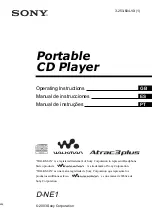
4
HP OpenView NNM SE 1.2 With Dell OpenManage HIP 3.2 User’s Guide
term is often rounded to mean
1,000,000 bytes.
0+]
Abbreviation for megahertz.
MIB
Acronym for management information
base.
MIF
Acronym for management information
format. MIF is a file that contains informa-
tion, status, and links to component
instrumentation. MIF files are installed
into the MIF database by the service layer.
The content of a MIF is defined by a DMTF
working committee and is published in
the form of a MIF definition document.
This document identifies the groups and
attributes that are relevant to DMI-
manageable components.
PLUURULQJ
A type of data redundancy that uses a set
of physical drives to store data and one or
more sets of additional drives to store du-
plicate copies of the data. Mirroring is the
preferred data redundancy technique in
lower-capacity systems and in systems
where performance is extremely impor-
tant. See also
guarding
,
RAID 1
, and
RAID 10
.
NIC
Abbreviation for network interface
controller.
NLM
Abbreviation for NetWare Loadable
Module.
NNM SE
Abbreviation for Network Node Manager
Special Edition.
NTSF
Abbreviation for the NT File System op-
tion in the Windows NT operating system.
out-of-band
Communications that use a remote assis-
tance card to remotely manage a server
using a modem or an on-board NIC on the
card. The out-of-band path is used for
remote management of a server or for ac-
cessing server information when the
server or network is down.
parameter
A value or option that you specify to a pro-
gram. A parameter is sometimes called a
switch or an argument.
PCI
Abbreviation for Peripheral Component
Interconnect.
peripheral device
An internal or external device—such as a
printer, a disk drive, or a keyboard—con-
nected to a computer.
POST
Acronym for power-on self-test. Before
the operating system loads when you turn
on your computer, the POST tests various
system components such as RAM, the
disk drives, and the keyboard.
PSPB
Abbreviation for power-supply paralleling
board.
RAID
Acronym for redundant array of indepen-
dent disks. This phrase was introduced by
David Patterson, Garth Gibson, and Randy
Katz at the University of California at Ber-
keley in 1987. The goal of RAID is to use
multiple small, inexpensive disk drives to
provide high storage capacity and perfor-
mance while maintaining or improving the
reliability of the disk subsystem.
Patterson, Gibson, and Katz described
five different methods, which are known
as RAID levels 1 through 5. Each level
uses one or more extra drives to provide
a means of recovering data lost when a
disk fails, so that the effective failure rate
of the whole disk subsystem becomes
very low.
Recently, Katz has defined a sixth meth-
od, RAID 6, which improves reliability
even further, and a configuration that pro-
vides no data recovery has popularly
become known as RAID 0.
Summary of Contents for OpenManage HIP 3.2
Page 1: ... ZZZ GHOO FRP 3 2SHQ9LHZ 110 6 LWK HOO 2SHQ0DQDJH 3 86 5 6 8 ...
Page 24: ...1 14 HP OpenView NNM SE 1 2 With Dell OpenManage HIP 3 2 User s Guide ...
Page 50: ...2 26 HP OpenView NNM SE 1 2 With Dell OpenManage HIP 3 2 User s Guide ...
Page 62: ...A 4 HP OpenView NNM SE 1 2 With Dell OpenManage HIP 3 2 User s Guide ...





































